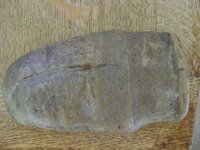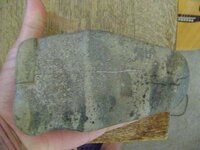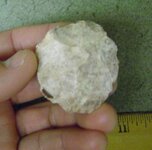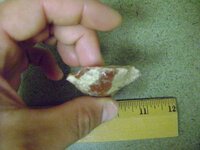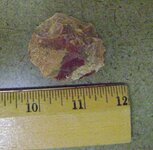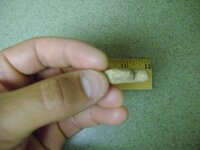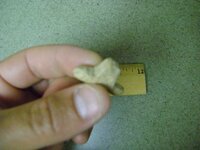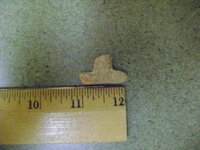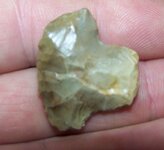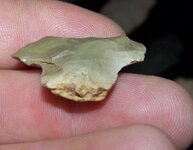This is an axe i found on a river terrace on the Gunnison bluff about 100 yards from the Gunnison River Colorado. It is one of my most favorite pieces that i have found.. I found it during my mapping project for geology field camp. I was just walking along doing pebble counts on the river terrace, and thought this booger looked out of the ordinary. It was half burried, and only the area that was exposed was the nose of the ax. I picked it up and almost soiled myself. There's a hairline fracture on it that runs from the nose to the middle of the ax from it being used to strike something hard. It's in great shape and complete. I need to get a display for it.
Attachments
Upvote
0


